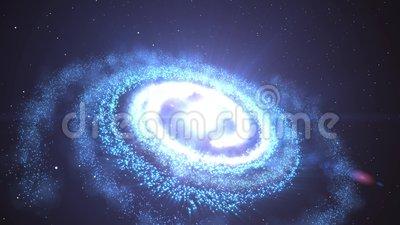
Galaxies and braids
Right next to us, on a cosmic scale, that is, on the outskirts of the Milky Way, a galaxy has been discovered with probably a huge content of dark matter, which creates opportunities for its early observations. At the same time, it turned out that dark matter could be even closer, even within range, because, as Gary Preso, a researcher at NASA's Jet Propulsion Laboratory, suggested, the Earth has "braids" of dark matter.
The galaxy in Triangulum II is a small formation containing only about a thousand stars. However, scientists from the Caltech Institute suspect that a mysterious dark matter is hidden in it. Where did this assumption come from? Evan Kirby of the aforementioned Caltech determined the mass of this galaxy by measuring the speeds of six stars orbiting the object's center using the 10-meter Keck Telescope. The mass of the galaxy, calculated from these movements, turned out to be much larger than the total mass of the stars, which means that the galaxy probably contains a lot of dark matter.
In this situation, the Triangulum II galaxy may become the main target and area of study. It has this, among other things, the advantage of being relatively close to us. WIMP (Weakly Interacting Massive Particles), one of the main candidates for identification with dark matter, could possibly be detected in it quite easily, since it is a “calm” galaxy, without other strong radiation sources that could be mistaken for WIMPs. Preso's claims, on the other hand, are based on the recent belief that dark matter in space is in the form of "fine jets" of particles that permeate outer space. These streams of exotic dark matter particles can not only extend beyond the solar system, but also cross the boundaries of galaxies.
Therefore, when the Earth crosses such streams during its journey, its gravity affects them, making them look like hairs with bulbs growing around our planet. According to the scientist, they grow from a sphere extending a million kilometers above the Earth's surface. In his opinion, if we could track the location of such "hair follicles", research probes could be sent there, which would give data on particles about which we still know practically nothing. Perhaps even better would be to send a camera into orbit around Jupiter, where dark matter "hair" could exist in a much more intense form.
